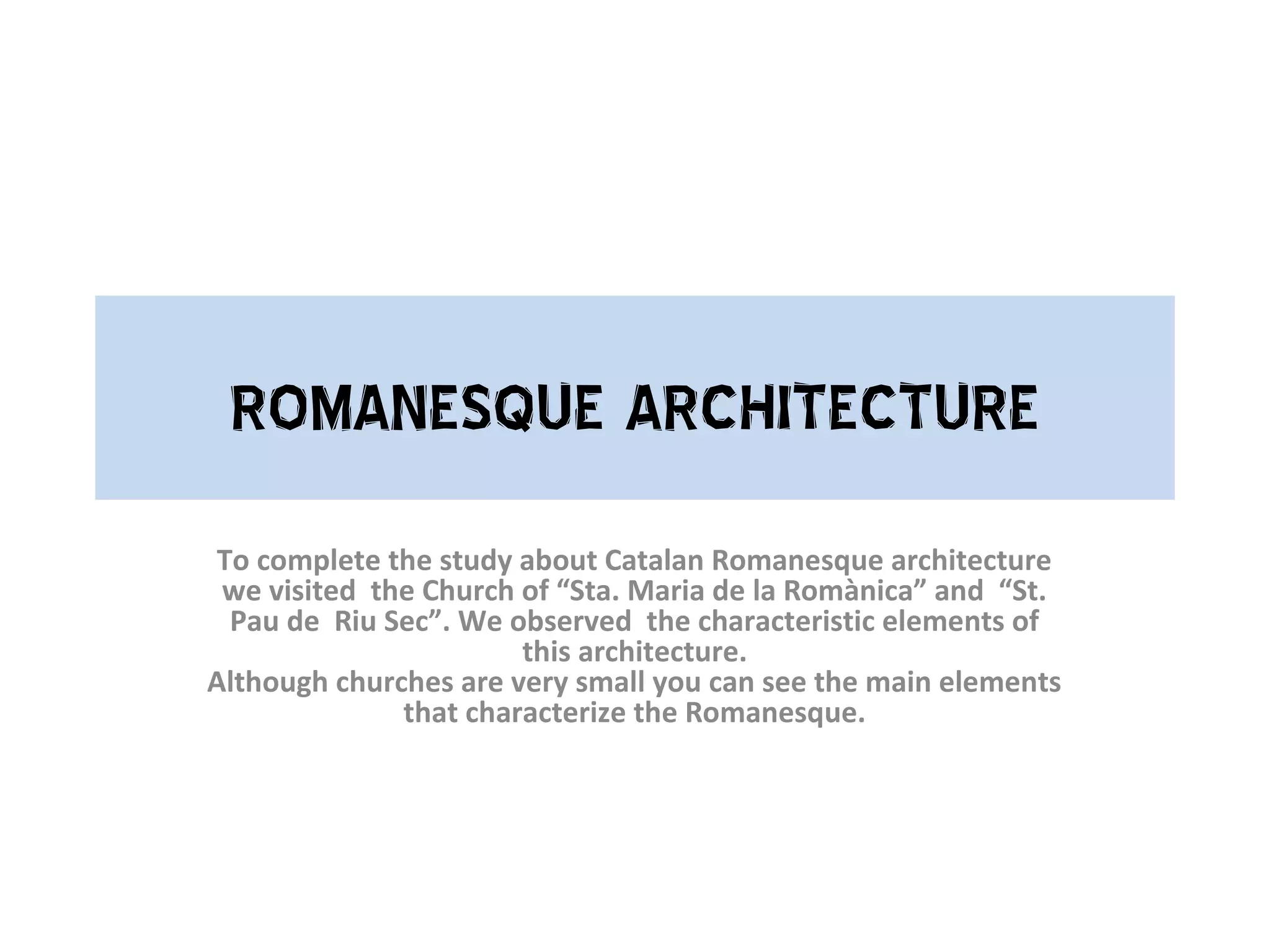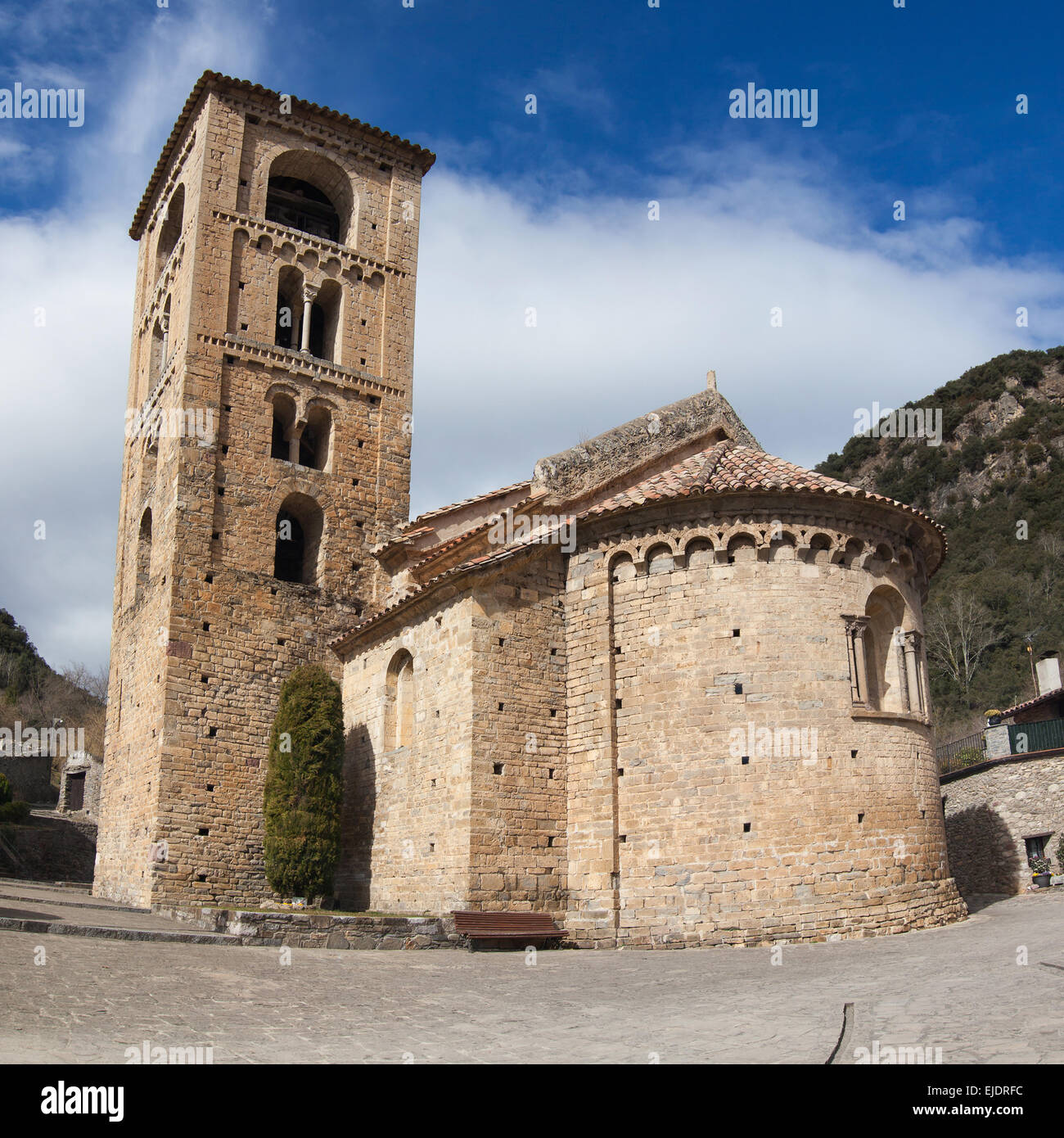World Updates | Update information about politics and social around the world
Sant Esteve: A Timeless Masterpiece Of Catalan Romanesque Architecture
Sant Esteve: A Timeless Masterpiece Of Catalan Romanesque Architecture: A testament to the enduring legacy of Catalan Romanesque architecture, Sant Esteve captivates with its breathtaking beauty and historical significance.
Editor's Notes: Sant Esteve: A Timeless Masterpiece Of Catalan Romanesque Architecture was published __date__ it's important because it unravels the architectural brilliance and historical significance of this masterpiece, providing valuable insights and perspectives.
Backed by thorough analysis and extensive research, this guide delves into the intricacies of Sant Esteve's architectural features, historical context, and cultural impact.
FAQs
This FAQ section provides answers to common questions regarding Sant Esteve, an exemplary masterpiece of Catalan Romanesque architecture.

Romanesque architecture.excursion | PPT - Source www.slideshare.net
Question 1: What is the historical significance of Sant Esteve?
Sant Esteve holds immense historical significance. It was consecrated in 1131 and served as a Benedictine monastery until its secularization in 1835. The church's architectural features, such as the ribbed vaults and sculpted capitals, reflect the transition from Lombard Romanesque to Gothic styles, making it a valuable testament to Catalan architectural evolution.
Question 2: What are the distinguishing architectural characteristics of Sant Esteve?
Sant Esteve showcases remarkable architectural features. Its impressive octagonal dome, supported by eight pillars, dominates the interior space. The church's ribbed vaults, a characteristic of Gothic architecture, provide structural stability and create a sense of height and spaciousness. The intricately carved capitals, depicting biblical scenes and mythical creatures, are a testament to the skill of medieval artisans.
Question 3: Can the public visit Sant Esteve?
Yes, Sant Esteve is open to the public for visits. Guided tours are available to provide insights into the church's history, architecture, and artistic significance. Visitors can admire the stunning frescoes that adorn the apse and the beautifully preserved cloister, which features a peaceful garden and intricate stonework.
Question 4: How can I get to Sant Esteve?
Sant Esteve is conveniently located in the town of Banyoles, in the Catalonia region of Spain. It is easily accessible by car or public transportation. Visitors can take the train from Barcelona Sants station to Banyoles station and then walk or take a short taxi ride to the church.
Question 5: What is the best time to visit Sant Esteve?
The best time to visit Sant Esteve is during the off-season (October to April) when there are fewer crowds. However, it is open year-round and offers a charming experience regardless of the season.
Question 6: Are there any other notable landmarks nearby?
In addition to Sant Esteve, Banyoles offers several other notable landmarks. The picturesque Lake Banyoles, surrounded by scenic walking trails, is a popular destination for nature enthusiasts. Visitors can also explore the medieval Banyoles Castle, which houses the Darder Museum, showcasing a collection of archaeological artifacts and local history.
In conclusion, Sant Esteve is a true architectural gem, offering a glimpse into Catalonia's rich artistic and architectural heritage. Its historical significance, stunning features, and accessibility make it a must-visit destination for anyone interested in Romanesque architecture and Catalan history.
To delve deeper into the fascinating world of Sant Esteve, continue to the next article section, which explores the church's unique architectural details and historical context.
Tips for Enjoying Sant Esteve
As you plan your visit to Sant Esteve: A Timeless Masterpiece Of Catalan Romanesque Architecture, keep these tips in mind for an enriching and memorable experience:
Tip 1: Explore the Exterior
Take time to admire the church's intricate facade, featuring biblical scenes and sculptures. Note the beautiful Romanesque doorway and the two bell towers, which offer a panoramic view of the surrounding countryside.
Tip 2: Admire the Interior
Step inside the church to marvel at its well-preserved barrel-vaulted ceiling, supported by massive pilasters. The apse features stunning 12th-century frescoes depicting the life of Christ.
Tip 3: Understand the Historical Context
Before your visit, read about the history of Sant Esteve and its role in Catalan Romanesque architecture. This knowledge will enhance your appreciation of its significance and beauty.
Tip 4: Visit Nearby Attractions
Combine your visit to Sant Esteve with exploring other notable landmarks in the area, such as the Medieval Village of Besalú or the Romanesque Bridge of Besalú.
Tip 5: Guided Tours
To gain a deeper understanding of the church's history and significance, consider booking a guided tour. Knowledgeable guides will provide insights into the architectural details and the stories behind the frescoes.
By following these tips, you'll make the most of your visit to Sant Esteve and gain a true appreciation for its timeless beauty and historical significance.
Sant Esteve: A Timeless Masterpiece Of Catalan Romanesque Architecture
Sant Esteve, situated amidst the captivating Pyrenees mountains, stands as a testament to the enduring legacy of Catalan Romanesque architecture. This architectural marvel showcases an intricate interplay of key aspects that contribute to its timeless allure.
- Architectural Harmony: Sant Esteve exhibits a seamless blend of architectural elements, from its robust stone facade to its graceful vaulted ceilings, creating a cohesive masterpiece.
- Sculptural Adornment: The church boasts an array of exquisite sculptures, including intricate capitals and lifelike figures, adding depth and narrative to its aesthetic.
- Majestic Facade: The imposing facade, adorned with intricate carvings and a monumental doorway, invites visitors into a realm of architectural splendor.
- Interior Serenity: Stepping inside, one is greeted by a sense of tranquility, as soft light filters through the narrow windows, illuminating the vaulted sanctuary.
- Historic Significance: Sant Esteve has witnessed centuries of Catalan history, serving as a place of worship, refuge, and cultural exchange.
- Preserved Legacy: Meticulously restored and preserved, Sant Esteve continues to captivate visitors with its enduring charm, offering a glimpse into the rich architectural heritage of Catalonia.
These key aspects intertwine seamlessly, creating a masterpiece that transcends time and continues to inspire awe in all who behold it. Sant Esteve serves as a testament to the enduring legacy of Catalan Romanesque architecture, embodying the harmonious interplay of architectural elements, sculptural artistry, and profound historical significance.

Masterpiece of the Romanesque Architecture, Gellone Abbey in Saint - Source www.dreamstime.com

Catalan romanesque church of Sant Cristofol in Beget, Girona province - Source www.alamy.com
Sant Esteve: A Timeless Masterpiece Of Catalan Romanesque Architecture
The church of Sant Esteve in Andorra la Vella is a remarkable example of Catalan Romanesque architecture. Its simple yet elegant lines and harmonious proportions reflect the architectural principles of the period. The church was built in the 12th century, a time of great political and religious change in Catalonia. The Romanesque style was a popular choice for churches during this period, as it represented the strength and stability of the Church in a time of upheaval.

Interior Of Gellone Abbey, A Masterpiece Of Romanesque Architecture - Source cartoondealer.com
Sant Esteve is a small, single-nave church with a semicircular apse. The nave is divided into three bays by two massive piers. The apse is decorated with a series of blind arches, which add a sense of depth and richness. The church's exterior is equally impressive, with its crenellated tower and Lombard band decoration. Sant Esteve is a well-preserved example of Catalan Romanesque architecture. It is a testament to the skill and artistry of the builders who created it. The church is also a reminder of the important role that religion played in the lives of the people of Andorra during the Middle Ages.
The church of Sant Esteve is a valuable historical and architectural monument. It is a popular tourist destination, and it is also used for religious services. The church is a reminder of the rich cultural heritage of Andorra, and it is a symbol of the country's traditions and beliefs.
| Feature | Significance |
|---|---|
| Romanesque architecture | Sant Esteve is a typical example of Catalan Romanesque architecture, which is characterized by its simple lines and harmonious proportions. |
| 12th-century construction | The church was built in the 12th century, a time of great political and religious change in Catalonia. |
| Single-nave church | Sant Esteve is a small, single-nave church with a semicircular apse. |
| Blind arches | The apse is decorated with a series of blind arches, which add a sense of depth and richness. |
| Crenellated tower | The church's exterior is equally impressive, with its crenellated tower and Lombard band decoration. |